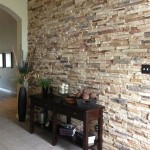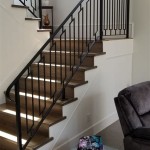Designing Interior Spaces For Homeschooling
Homeschooling has experienced significant growth in recent years, necessitating thoughtful consideration of the home environment to facilitate effective learning. Designing interior spaces specifically for homeschooling requires a strategic approach, balancing functionality, aesthetics, and the diverse needs of individual learners. The aim is to create an environment that is conducive to focused study, creative exploration, and overall educational development.
The success of a homeschooling environment hinges on careful planning that considers the age, learning style, and subject matter being taught. A flexible and adaptable space allows for a variety of activities, from quiet reading to hands-on experiments. Incorporating elements that foster a sense of ownership and engagement is crucial for student motivation and academic achievement.
Defining the Space and Its Purpose
The initial step in designing a homeschooling space involves defining its purpose and scope. This includes determining the number of students who will be using the space, the subjects that will be taught, and the activities that will be conducted. Consideration should be given to whether the space will be used exclusively for homeschooling or will also serve other functions, such as a home office or family room.
If space is limited, a multi-purpose room can be designed with designated zones for different activities. For instance, a corner could be set up for reading with comfortable seating and appropriate lighting, while another area might be equipped for arts and crafts with durable surfaces and easy access to supplies. Utilizing storage solutions that can be easily concealed when not in use can help maintain a sense of order and prevent the space from feeling cluttered.
Larger homes may allow for a dedicated homeschooling room. In this case, the design can be more tailored to specific educational needs. A dedicated space offers the advantage of minimizing distractions and providing a consistent learning environment. Considerations for a dedicated space include soundproofing to reduce noise pollution, ample natural light, and a layout that promotes both individual and group work.
Regardless of the size of the space, proper ventilation is crucial for maintaining a healthy and productive learning environment. Ensuring adequate airflow and temperature control can improve concentration and reduce fatigue. Consider incorporating plants to improve air quality and add a touch of nature to the learning environment.
Creating a Functional and Organized Layout
A functional and organized layout is essential for promoting efficiency and minimizing distractions in a homeschooling space. The arrangement of furniture and the placement of learning materials should be carefully considered to optimize workflow and accessibility. The goal is to create a space that supports both independent study and collaborative learning activities.
Ergonomics play a significant role in creating a comfortable and productive learning environment. Choose chairs and desks that are appropriately sized for the students and encourage good posture. Adjustable furniture can accommodate the growth of children and allow for customization to individual needs. Consider incorporating standing desks or adjustable height tables to promote movement and reduce sedentary behavior.
Storage solutions are integral to maintaining an organized homeschooling space. Shelving units, drawers, and cabinets provide ample storage for books, supplies, and other learning materials. Labeling containers and organizing materials by subject or activity can help students easily find what they need and promote independence. Clear storage bins allow for quick visual identification of contents, while closed cabinets can conceal clutter and create a more streamlined appearance.
The layout should also consider the flow of traffic within the space. Avoid creating bottlenecks or obstructions that could disrupt learning activities. Ensure that students can easily access all areas of the room without disturbing others. A clear and unobstructed path to the door can also be important for safety, especially in the event of an emergency.
Technology integration should also be considered in the layout. Provide adequate outlets and charging stations for computers, tablets, and other electronic devices. Consider incorporating a dedicated charging station to keep cords organized and prevent tripping hazards. Wireless internet access is essential for online learning and research. Ensure that the router is strategically placed to provide strong and reliable coverage throughout the homeschooling space.
Incorporating Engaging and Stimulating Design Elements
Beyond functionality, the design of a homeschooling space should also incorporate elements that are engaging and stimulating. Creating an environment that fosters curiosity, creativity, and a love of learning is crucial for student motivation and academic success. Consider incorporating visual aids, interactive displays, and personalized touches to make the space feel inviting and inspiring.
Color psychology can play a role in influencing mood and focus. Calming colors such as blues and greens can promote relaxation and concentration, while brighter colors such as yellows and oranges can stimulate creativity and energy. Consider using a combination of colors to create a balanced and stimulating environment. Avoid using overly bright or distracting colors, as these can be overwhelming and counterproductive.
Visual aids can be used to reinforce learning concepts and create a stimulating environment. Maps, charts, timelines, and posters can be displayed to provide visual references and spark curiosity. Consider incorporating a whiteboard or chalkboard for brainstorming, problem-solving, and creative expression. Interactive displays, such as bulletin boards or corkboards, can be used to showcase student work, display inspirational quotes, and share important announcements.
Personalization is key to creating a space that feels welcoming and inspiring. Encourage students to decorate the space with their own artwork, photographs, and personal mementos. Allowing students to have a sense of ownership over the space can foster a sense of belonging and encourage them to take pride in their learning environment. Consider incorporating elements that reflect their interests and passions, such as a reading corner with their favorite books or a science station with their latest experiments.
Natural light is highly beneficial for learning and well-being. Maximize natural light by positioning desks and workstations near windows. Consider using sheer curtains or blinds to filter sunlight and reduce glare. If natural light is limited, supplement with full-spectrum lighting to mimic the effects of sunlight and improve mood and concentration. Avoid using harsh fluorescent lighting, which can cause eye strain and fatigue.
Finally, incorporate elements of nature into the homeschooling space to create a calming and inspiring environment. Plants can improve air quality, reduce stress, and add a touch of beauty to the room. Consider incorporating a small indoor garden or a terrarium to bring nature indoors. Natural materials such as wood, stone, and bamboo can also create a sense of warmth and connection to the outdoors.
By carefully considering these design principles, it is possible to create a homeschooling space that is functional, organized, and engaging. A well-designed homeschooling environment can significantly enhance the learning experience and contribute to the academic success of students.

Our Homeschool Room Design Studio Home Office

Learning Spaces At Home Homeschool Distance Workspaces The Art Pantry

Learning Spaces At Home Homeschool Distance Workspaces The Art Pantry

Homeschool Room Ideas How To Create An Inspiring In A Small Space This Intentional Home

How To Organize Your Homeschool Room Classical Conversationsclassical Conversations

Homeschool Rooms Inspiring Decorating And Organizing Ideas Homeschoolclassroom Ho Room Design Decor Organization

Top 10 Homeschool Room Ideas For At Home Learning Decorilla Interior Design

Ten Beautifully Designed Spaces That Show You Can Homeschool Anywhere

Create An Inviting Homeschool Room For Young Children

Loving Your Homeschool Space Advice From 6 Veteran Homeschoolers Compass
Related Posts








